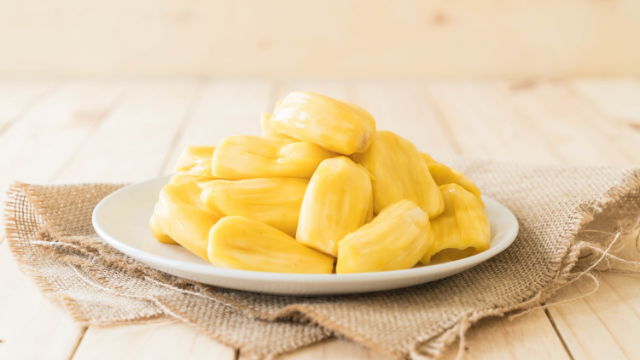Can Cats Eat Strawberries?
Cats and Strawberries Safety Guide
Pet owners often wonder about expanding their feline's cat food options, and strawberries frequently spark curiosity in the realm of pet nutrition. Understanding what cats can safely consume is crucial for maintaining their health and well-being.
Key Takeaways
Strawberries are safe for cats in moderation
Cats are obligate carnivores with specific nutritional needs
High sugar content makes strawberries a rare treat
Portion control is essential when offering strawberries
Strawberries are safe for cats in moderation
Cats are obligate carnivores with specific nutritional needs
High sugar content makes strawberries a rare treat
Portion control is essential when offering strawberries
Safety and Toxicity of Strawberries for Cats
Cat owners often wonder about introducing new treats to their feline friends. When it comes to can cat eat strawberries, understanding the safety guidelines is crucial for responsible pet care.
The American Society for the Prevention of Cruelty to Animals (ASPCA) provides clear guidance on feeding strawberries to cats. Although strawberries aren't toxic to cats, pet owners should be cautious and follow proper preparation steps.
Understanding Strawberry Safety for Felines
Cats are natural meat-eaters, meaning their bodies are built to digest animal-based foods. While strawberries can be given as a rare treat, they shouldn't take the place of a nutritionally complete diet.
Strawberries are non-toxic to cats
Serve in very small quantities
Remove stems and leaves before serving
Potential Digestive Risks
The stems and leaves of strawberries can lead to serious digestive problems for cats. These parts may lead to gastrointestinal obstruction or discomfort, making careful preparation essential.
Safe Serving Recommendations
Can Cats Eat Strawberries: Benefits and Nutritional Value
Examining the nutritional value of strawberries for cats offers a unique insight into how fruits can fit into a feline's diet. While these vibrant red fruits pack a powerful nutritional punch for humans, their benefits for felines are more nuanced.
Strawberries contain several key nutrients that could potentially interest cat owners:
Antioxidants that support cellular health
Vitamin C for immune system support
Dietary fiber for digestive function
Potassium for muscle and nerve health
The difficulty with feeding cats human food stems from their distinct digestive systems. Cats are obligate carnivores, which means their digestive systems are adapted to process animal-based proteins best. Strawberry safety for cats depends on understanding their limited ability to derive nutritional value from plant-based foods.
Veterinary nutritionists suggest that while strawberries aren't toxic, they offer minimal nutritional benefits for cats. Cats would need to consume large quantities to absorb meaningful nutrients—an approach not recommended due to the fruit's high sugar content.
A small strawberry treat can be an occasional novelty, but it should never replace a balanced, protein-rich diet.
For cat owners curious about expanding their pet's diet, consulting with a veterinarian remains the best approach to ensure optimal nutrition and strawberry safety.
How to Properly Prepare Strawberries for Your Cat
Introducing strawberries as healthy snacks for felines requires careful preparation. While cats can eat strawberries in moderation, proper cleaning and serving techniques are crucial to ensure your pet's safety.
Washing and Cleaning Essentials
Cats are sensitive to pesticides and contaminants, so follow these steps:
Rinse strawberries under cold running water
Gently scrub the surface to remove dirt
Pat dry with a clean paper towel
Remove any can cats eat strawberries leaves or stems completely
Cutting Techniques for Feline Safety
Cutting strawberries properly reduces the risk of choking and makes them easier for cats to eat safely :
Use a sharp, clean knife
Cut strawberries into tiny, bite-sized pieces
Ensure pieces are smaller than 1/4 inch
Serving Guidelines and Portion Control
Remember, strawberries should never replace a balanced diet. They are merely an occasional treat that can provide some nutritional variety for your feline companion.
" Professional pet nutritionists recommend maintaining a balanced, meat-based diet for cats. Small quantities of strawberries might provide occasional variety, but they cannot substitute essential protein sources. Pet owners should always consult their veterinarian before introducing new foods to their cat's diet, ensuring optimal health and nutritional balance. Ultimately, understanding your cat's unique dietary needs remains paramount. While exploring can cats eat strawberries provides interesting insights, responsible pet care centers on providing nutritionally complete meals that support feline health and wellness. "
When introducing strawberries to your cat's diet, understanding potential allergic reactions is crucial for responsible pet nutrition. Cat owners should watch for specific symptoms that might indicate a strawberry-related allergic reaction in their feline companion. Respiratory distress: Coughing, wheezing, or difficulty breathing Skin reactions: Itchiness, rashes, or unusual skin breakouts Digestive issues: Vomiting, diarrhea, or sudden changes in appetite Nasal symptoms: Runny nose, sneezing, or watery eyes The complexity of feline diet means that individual cats may react differently to new foods. Some cats might experience mild discomfort, while others could have more severe allergic responses. Pro tip: When introducing any new item to your cat food lineup, always start with tiny portions and observe your pet closely for 24-48 hours. Your cat’s well-being comes first. If you’re unsure, it’s always best to seek advice from a veterinary professional. Keep in mind that pet nutrition can be complex, and what benefits one cat may not be suitable for another. Always prioritize your cat's individual dietary needs and be prepared to respond quickly to any adverse reactions. When considering fruit for cats, strawberries often fall low on their list of desirable snacks. The reason lies deep within their unique biological makeup and dietary preferences.Cats are obligate carnivores, meaning their bodies are naturally adapted to digest and utilize nutrients from animal-based proteins. Unlike humans, cats have a peculiar characteristic when it comes to taste. They lack the ability to detect sweet flavors, which significantly impacts their interest in fruits like strawberries. Their taste buds are primarily focused on detecting protein-rich foods, making healthy snacks for felines quite different from human preferences. Cats cannot taste sweetness Protein is their primary nutritional focus Evolutionary adaptation limits fruit interest When pet owners ask, "Can cats eat strawberries?" Their ancestral diet consisted of small prey, which shaped their nutritional requirements and taste preferences. For cat owners seeking nutritious treats, consider protein-based options that align with feline dietary needs. Lean meats, specially formulated cat treats, and veterinarian-recommended snacks are much more suitable alternatives to strawberries. Cooked chicken pieces Commercial cat treats Small portions of fish When considering whether cats can eat strawberries, pet owners should approach the topic with careful consideration. While these fruits are not toxic to cats, they do not represent a critical component of pet nutrition. Cats remain obligate carnivores with dietary requirements primarily focused on animal protein. Cat treats like strawberries should be viewed as occasional, minimal treats rather than dietary staples. Veterinary nutritionists emphasize that any fruit offerings must be small, infrequent, and carefully prepared. The risks of introducing unfamiliar foods often outweigh potential minor benefits for cats' specialized digestive systems. Strawberries pose no toxicity risk to cats. Cats are obligate carnivores, and while strawberries are safe, they are not a necessary part of their diet. Cats should only eat a very small amount of strawberry - typically no more than one or two small pieces. This prevents potential digestive issues and ensures the treat remains a minimal part of their diet. Always remove stems and leaves before serving. No, cats should not eat strawberry leaves or stems. These parts can be difficult to digest and may potentially cause digestive upset or choking. Do cats get any nutritional benefits from strawberries? While strawberries are nutrient-rich for humans, cats derive minimal nutritional benefit from them. Cats are carnivores with digestive systems designed to process meat, not fruits. Any potential nutrients are far outweighed by their need for protein-based nutrition. Watch for symptoms such as vomiting, diarrhea, lethargy, excessive scratching, or changes in behavior after introducing strawberries. Why don't cats seem interested in strawberries? Cats lack sweet taste receptors and have no evolutionary need for fruit in their diet. As obligate carnivores, their bodies are designed to process meat proteins, making sweet fruits like strawberries unappealing to their natural dietary preferences. Wash the strawberry thoroughly to remove pesticides, remove all stems and leaves, and cut it into small, bite-sized pieces to prevent choking. Serve in very small quantities as an occasional treat, and always monitor your cat's reaction. Yes, cats prefer protein-based treats that align with their natural diet. Consider small pieces of cooked chicken, fish, or commercially prepared cat treats that are nutritionally balanced and specifically designed for feline dietary needs.Signs of Strawberry Allergies and Adverse Reactions
Cat Strawberry Allergy Symptoms
Why Most Cats Don't Crave Strawberries
Cats' Unique Taste Receptors
Natural Dietary Preferences
Alternative Healthy Treats
Conclusion
FAQ
Are strawberries toxic to cats?
How many strawberries can I give my cat?
Can cats eat strawberry leaves or stems?
What signs of allergic reaction should I watch for?
How should I prepare strawberries for my cat?
Are there better treat alternatives for cats?



